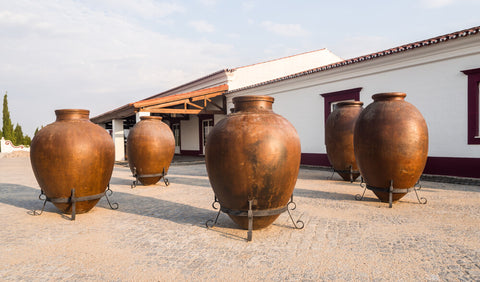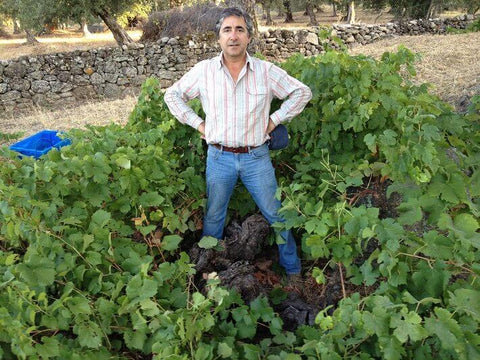
Alentejo, the vast region that accounts for a third of all Portugal’s land mass is having a moment.
It’s had glorious moments in the past: in the 1888 Berlin Exhibition, a white wine from Vidigueira scooped the Grand Medal of Honour and other wines from Evora, Borba, Reguengo and Redondo won medals too.
First colonised by the Phoenicians, then Greeks and Romans, its winemaking credentials were considered the best in Portugal and there are plenty of amphorae remains that testify to a long legacy of wine production. Alentejo still uses a lot of clay vessels – an unbroken tradition that is now regarded as positively trendy…

However, a few glitches got the better of its winemaking ambitions: the Marquis of Pombal sorting out the Douro and that region’s consequent rise in quality and profile, Phylloxera and two world wars, and the plan to convert Alentejo into Portugal’s bread basket post wars. By the time Alentejo was thinking about recovering its winemaking heritage, other regions were ahead of it. It was mostly recognized as the home of the cork rather than that of the liquid it stoppered.

But recent progress has been extraordinary – the creation of 8 distinct sub zones has highlighted the significant differences within this huge region and attracted a wide pool of wine making talent from Portugal itself and further afield.
The “hot spot” is as ever the coolest one, in the Portalegre region in the north-eastern corner huddled next to the border with Spain, in the Serra de São Mamede natural park at around 1000 metres.
In 2009 João Afonso bought a property in the far north of Portalegre. In a former life he’s been both a ballet dancer and a winemaker.

He’s settled up here in the Serra de São Mamede with his winery Cabeças do Reguengo, where some of his old vineyards overlook Spain and others Portugal and has been busy trying to resurrect old abandoned vines – many of them centenarian.
His winemaking philosophy is simple – he merely wants to bottle the purest possible expression of the wonderful old fruit from field blends with minimum intervention.
Working organically, he is moving towards Biodynamic certification with help of João Castella as a consultant.
He uses only natural yeasts, doesn’t fine or filter his wines and works with very low levels of sulphur.
Since moving up here he’s created an Agriturismo, so you can now stay and savour the peaceful surroundings as well as his delicious wines.

Pruning the vines at Vira Cabeças ©Sarah Ahmed, thewinedetective.co.uk
The traditional style of winemaking in the Alentejo generally was always robustly fruity and often equally robustly oaked – at least until Aussie David Baverstock arrived in Evora and set up Herdade do Esporão in the early 1980s. It’s difficult to overestimate the positive impact that development had on the Alentejo at that time, bringing in modern winemaking techniques and a vision to conserve the local environment that was decades ahead of its time.
You can get a taste of Modern Alentejo in these wines:
From Portalegre
- Cabeças do Reguengo, Vira Cabeças Tinto – a fresh medium bodied red with lively red fruit and a mineral lick.
- Cabeças do Reguengo, Vira Cabeças Branco – a nicely nutty and oxidative white field blend.
- Cabeças do Reguengo, Respiro Altitude – a more mineral and reductive white.
From Borba
- Quinta do Mouro “Estremoz” – the leading estate in the region. Made by Miguel Louro, it is a blend of Tempranillo, Alicante Bouschet, Cabernet Sauvignon and Touriga Nacional aged for 14 months in a mix of Portuguese and French oak. It drinks like good Bordeaux crossed with Douro red and is delicious.



